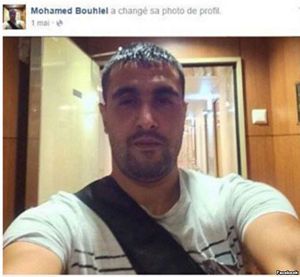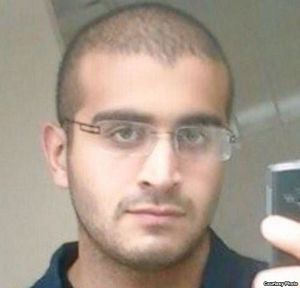|
By accessing or using The Crittenden Automotive Library™/CarsAndRacingStuff.com, you signify your agreement with the Terms of Use on our Legal Information page. Our Privacy Policy is also available there. |

Renewed Fears Attacks Like Nice Are the Future of Jihad
|
|---|
|
|
Renewed Fears Attacks Like Nice Are the Future of Jihad
Jeff Seldin, VOA News
16 July 2016
 Screen grab of profile photo of Nice attacker Mohamed Bouhlel. Screen grab of profile photo of Nice attacker Mohamed Bouhlel.
 Orlando shooter Omar Mateen. (Orlando Police Department) Orlando shooter Omar Mateen. (Orlando Police Department)
|
As investigators in France began sifting through the devastation of the attack on Bastille Day celebrations in Nice that killed 84 people, some Western intelligence officials were already alarmed.
They feared the initial investigation could fail to show any definitive links between the suspect, a 31-year-old Tunisian-born Frenchman named Mohamed Lahouaiej Bouhlel, and any known terror group. But they also feared that Bouhlel’s profile would fit with an emerging trend.
Increasingly, these officials said, the Islamic State terror group seems to be seeking out petty criminals and the mentally ill to quickly turn them into weapons.
So far, that appears to be how Bouhlel’s story is playing out.
The IS-linked Aamaq news agency said Saturday that the terror group was responsible for the deadly attack on Nice, claiming Bouhlel as a “soldier of the Islamic State.”
Evidence was still being gathered, but French officials were not ruling out the possibility.
"It seems that he was radicalized very quickly," French Interior Minister Bernard Cazeneuve told reporters Saturday in Paris.
Just a day earlier, French prosecutor Francois Molins had said that while Bouhlel was known to police and had been involved a violent altercation, he was “completely unknown” to French intelligence.
“This is the future of their jihad,” Malcolm Nance, a former counterterrorism and intelligence officer, said of IS. “All of these little absences of radicalization themselves are actually a sign of radicalization.”
The process is often quick, with no clear line of communication for intelligence agencies to follow. And it can take place with little human interaction; IS allowing its propaganda and ideology to do most of the work.
“They take people who have generally petty criminal backgrounds and give them something higher to strive for,” said Nance, who now heads the Terror Asymmetrics Project, a counter-ideology think tank in Hudson, New York.
The suspect in the Nice attack would seem to match that description.
Divorced, depressed
French media said Bouhlel was a divorced father of three and suffered from depression. Neighbors recalled being frightened of him, and others said he liked to drink alcohol and eat pork, practices shunned by observant Muslims.
It is a profile that shares striking similarities with at least two other terrorists in attacks either directed or inspired by IS.
Paris attack mastermind Abdelhamid Abaaoud, 28, liked to drink and is believed to have hung out at bars known for attracting drug dealers before suddenly becoming radicalized.
Omar Mateen, the shooter in the attack on a gay nightclub in Orlando, Florida, also is believed to have liked to party and may even have engaged in same-sex affairs.
“There is a sort of pathway of someone who has lived a very licentious lifestyle that joins a jihadi group in order to wipe the slate clean — in order to emerge, like, from a chrysalis into the butterfly that is the jihadi — because by becoming the jihadi, it washes away the sins of the past,” said Mia Bloom, a communications professor and terrorism expert at Georgia State University.
Until recently, it was a difficult path to take — one that could require a period of study and a concerted effort to change, if it could be done at all.
“There were some minimum standards,” said Bloom. “Terrorist groups tend to avoid people who are mentally ill. They avoid people who are psychopaths because they are not reliable as operatives.”
However, intelligence officials say the Islamic State model has turned that notion on its head. While the terror group established a large, secretive external operations wing bent on attacking the West, it has also cultivated a backup strategy of enabling and inspiring attacks by individuals.
The strategy appears to have found a ready audience.
“Lone wolf attackers disproportionately suffer from mental illness, not just relative to the general population, but also relative to official members within a terrorist group,” said Max Abrahms, a terrorism theorist at Northeastern University in Boston and a member of the Council on Foreign Relations who spoke to VOA via Skype.
Appealing to petty criminals
In Europe, especially, Islamic State’s message is hitting the mark with petty criminals tired of living on the edges of society.
“The idea is to kind of motivate these folks to conduct very simple attacks, using things they’re capable of using, close to where they live,” said Scott Stewart, vice president of tactical analysis for the Stratfor intelligence firm, who also spoke via Skype.
“And when there isn’t a connection to the core group or to these professional terrorists, it makes it very difficult for intelligence agencies to intercept communications and to find out the plans in advance,” he said.
FBI Director James Comey compared the task to looking for a needle in a haystack, only worse.
“It’s finding pieces of hay in that haystack that may become a needle,” he told a congressional hearing a few days ago.
“All of this makes the job for overwhelmed police and intelligence agencies even harder at a time when jihadists' capabilities have grown quite a bit,” said Daveed Gartenstein-Ross, a senior fellow at the Foundation for Defense of Democracies, a terrorism research and education group in Washington.
“We are overwhelmingly likely to see more attacks in the West. Things are likely to get worse before they get better,” he said.
Jesse Oni and Elizabeth Cherneff contributed to this story from Washington

















 Special Collection: Attack in Nice
Special Collection: Attack in Nice
 Screen grab of profile photo of Nice attacker Mohamed Bouhlel.
Screen grab of profile photo of Nice attacker Mohamed Bouhlel.
 Orlando shooter Omar Mateen. (Orlando Police Department)
Orlando shooter Omar Mateen. (Orlando Police Department)
